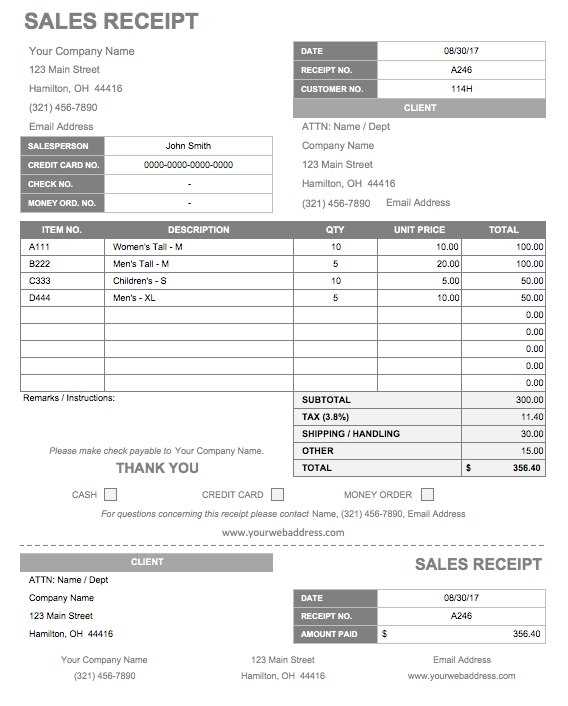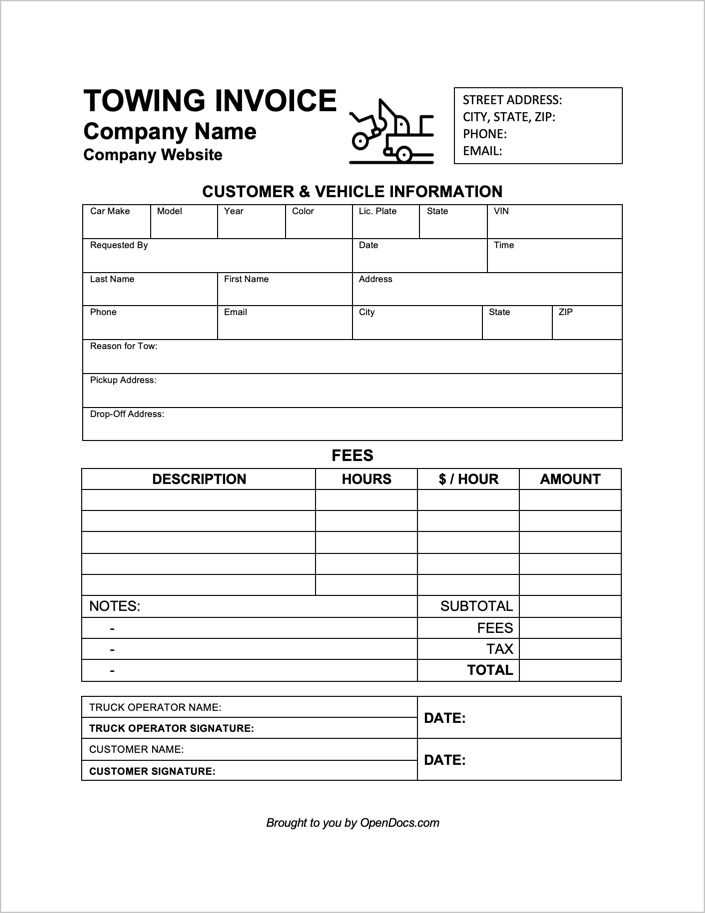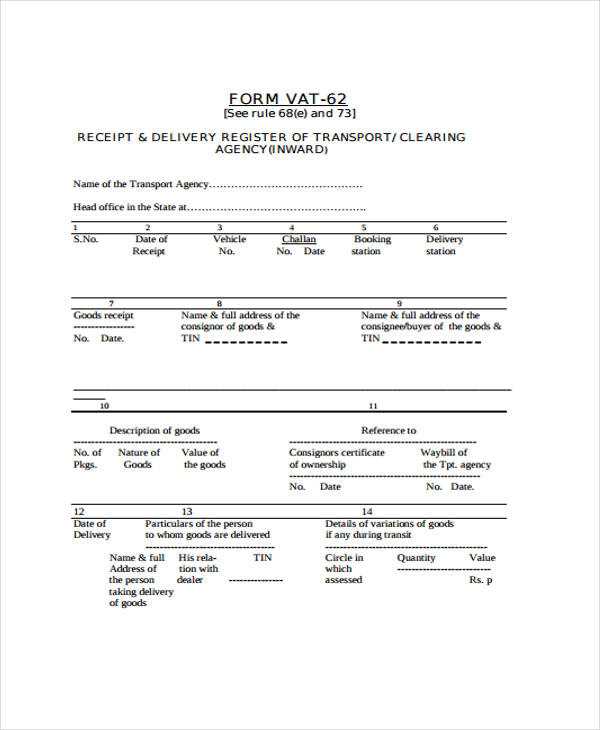
For accurate record-keeping in hauling operations, using a well-structured receipt template can save you time and eliminate errors. These templates provide a clear way to document the weight of goods transported, the associated fees, and other relevant details. Customizing templates to fit your specific business needs will make tracking easier and help streamline invoicing processes.
A tonnage hauling receipt template should include sections for key data points, such as date, customer information, origin and destination addresses, and the total weight hauled. Additionally, ensure space for itemized breakdowns of charges, including labor, mileage, and any other service fees. By detailing each element, you create a transparent record that can be referred to at any time for verification or disputes.
Using digital templates or software tools allows for quick generation of receipts, and most can be easily integrated into accounting systems. These automated processes reduce human error and improve accuracy, which is especially important when dealing with large volumes of material. Keep your templates updated to reflect any changes in regulations or pricing adjustments.
Tonnage Hauling Receipt Templates

Use a tonnage hauling receipt template to track transportation and delivery services efficiently. Include key details like the sender’s and recipient’s information, the tonnage of materials hauled, and the type of goods delivered. Make sure to add the date of service and the payment terms for clarity.
Key Elements to Include
- Sender Information: Name, address, and contact details of the party sending the materials.
- Recipient Information: Name, address, and contact details of the receiving party.
- Quantity of Goods: The total tonnage or weight of materials transported.
- Service Date: Date the hauling service was performed.
- Payment Terms: Clear instructions on how and when the payment should be made.
- Vehicle Details: Information about the vehicle used for transportation, including make, model, and registration number.
- Cost Breakdown: A detailed breakdown of charges, including rates per ton, distance, and additional fees.
Template Structure Example
- Receipt Header: Include the title “Tonnage Hauling Receipt” with a unique receipt number.
- Sender and Recipient Information: Contact details for both parties involved.
- Service Description: Detailed list of materials transported, total tonnage, and service performed.
- Cost Summary: Include the total cost, payment terms, and any taxes or additional fees.
- Signatures: Areas for both parties to sign, confirming the details are accurate.
These templates make it easier to document the services provided, reduce errors, and provide clear records for both customers and service providers.
Key Data Fields Required in Tonnage Hauling Receipts
To ensure accurate and clear tonnage hauling records, certain data fields must be included on receipts. These fields provide a detailed overview of the hauling transaction and ensure smooth documentation for all parties involved.
1. Hauling Date and Time
Specify the exact date and time of the hauling. This helps track the specific window in which the transport occurred and avoids confusion during verification processes.
2. Origin and Destination Locations

Both the pick-up and drop-off locations must be clearly listed. Include the address and any relevant descriptions, such as warehouse or depot numbers. This ensures there is no ambiguity about the route and location.
3. Vehicle and Driver Details
Provide the vehicle’s registration number and the driver’s name or ID. These details serve as a point of reference in case of any disputes or verification needs.
4. Tonnage or Weight of Cargo
Clearly state the weight or tonnage of the goods being hauled. This is the core metric for the transaction and is vital for invoicing and regulatory purposes.
5. Cargo Description
Include a concise description of the hauled cargo, specifying its type, condition, and any specific handling requirements. This provides a complete picture of the transport operation.
6. Charges and Fees
Itemize the cost of hauling services, including any additional charges for special handling, fuel surcharges, or other relevant fees. Transparency in pricing helps avoid misunderstandings later.
7. Payment Information
Include the payment method and status. Indicating whether the payment is pending, completed, or outstanding helps maintain clear financial records for both parties.
8. Signature and Authorization

Ensure that both the service provider and the recipient sign the receipt. These signatures confirm the agreement and completion of the hauling transaction.
Formatting Guidelines for Clear and Legible Receipts
Ensure the font is readable by choosing sizes between 10 and 12 points. Avoid overly decorative fonts that may hinder clarity.
Font Type and Size

Use simple, sans-serif fonts like Arial or Helvetica for easy reading. Keep the font size consistent throughout the receipt, with key details such as totals or dates being slightly larger or bolded for emphasis.
Spacing and Alignment
Maintain adequate space between sections of the receipt. Group related information together, such as the date, items, and totals. Use left-alignment for text to enhance readability.
Ensure enough white space around the text to avoid a cluttered appearance. This helps the customer easily locate critical information without having to sift through dense blocks of text.
Highlight critical details, such as the total amount, using bold or a slightly larger font size. Use a uniform date format (e.g., MM/DD/YYYY) for consistency and clarity.
Avoid cramming too much information into one area. Spread out item descriptions and quantities so they don’t overlap, and ensure that totals are clearly separated from other information.
Use lines or subtle shading to separate sections (e.g., items list, payment method, and total) for an organized, professional look.
Lastly, review your design periodically to ensure it remains legible and meets customer expectations. Regular testing across different devices or printing methods can prevent any readability issues.
Digital vs. Paper-Based Tonnage Hauling Receipts: Pros and Cons

Choosing between digital and paper-based tonnage hauling receipts depends on the specific needs of your operation. Digital receipts are more easily stored, reducing clutter and saving physical space. They can be accessed anytime, making retrieval faster and more convenient. They also minimize the risk of loss, as data can be backed up securely in cloud storage. Additionally, digital records allow for quicker integration with accounting software, speeding up processing times.
Paper-based receipts, however, offer the advantage of being physical documents that can be handled and reviewed in-person without requiring technology. They don’t rely on internet access or devices, which can be helpful in areas with connectivity issues. Paper receipts are often seen as more tangible and reliable in the eyes of certain stakeholders, such as regulatory bodies or clients who prefer hard copies for their records.
Both options come with their drawbacks. Digital receipts may face issues with compatibility across different systems or require ongoing software updates to ensure they remain usable. They are also vulnerable to cybersecurity threats if not properly protected. Paper receipts, while reliable in certain contexts, take up physical storage space, are prone to wear and tear, and can be easily lost in the event of accidents like fire or water damage.
For businesses looking to streamline their processes, digital receipts offer better long-term scalability and easier management. However, for smaller operations or those with less reliance on technology, paper receipts may still be a more practical choice. Balancing both options based on your operational needs and resources is a common approach.


